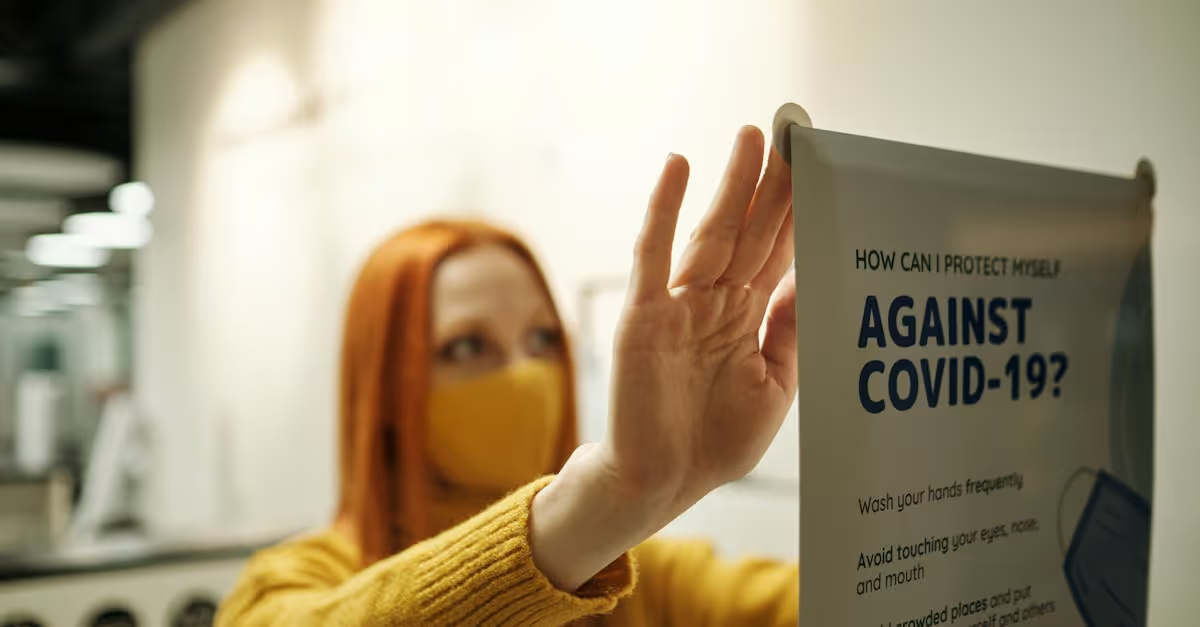Key Takeaways
- Chlorine's Role in Safety: Proper chlorine levels are essential for preventing pool-related illnesses, with nearly 4,000 cases reported annually by the CDC.
- Testing Methods: There are various methods for testing chlorine levels, including pool test strips, test kits, and digital monitors, each offering different levels of accuracy and convenience.
- Optimal Chlorine Levels: Free chlorine should be maintained between 1-3 parts per million (ppm) to ensure effective sanitation and discourage harmful bacteria.
- Adjusting Chlorine Levels: Regular adjustments may be necessary based on environmental factors such as temperature, heavy pool use, and rainfall.
- Common Challenges: Low chlorine can be addressed with additional chemicals, while high levels may require diluting the pool water and investing in stabilizers.
- Consistent Maintenance: Establishing a regular testing and maintenance schedule, along with ensuring proper pool circulation, is crucial for a safe and clean swimming environment.
Maintaining proper chlorine levels in our pools isn’t just a matter of comfort; it’s crucial for safety and cleanliness. Did you know that the CDC reports nearly 4,000 pool-related illnesses each year? This startling statistic highlights the importance of regular testing and maintenance.
Chlorine plays a vital role in keeping our swimming environments free from harmful bacteria and viruses. By ensuring the right balance, we can protect ourselves and our loved ones while enjoying those refreshing summer days. In this article, we’ll explore effective methods for testing and maintaining chlorine levels, empowering us to create a safe and enjoyable pool experience.
Importance of Chlorine in Pool Maintenance
Chlorine plays a crucial role in keeping our pools safe and clean. Maintaining proper chlorine levels protects against harmful bacteria and viruses, creating a safe environment for all swimmers. The CDC reports significant health risks from poorly maintained pools, with nearly 4,000 pool-related illnesses occurring each year. Chlorine helps us combat these risks through regular testing and adjustment.
Role of Chlorine in Water Safety
Chlorine acts as a powerful sanitizer in pool water. It targets pathogens like E. coli and Giardia, neutralizing them to prevent illness. Testing chlorine levels helps us verify the effectiveness of this sanitizer. Recommended free chlorine levels range from 1 to 3 parts per million (ppm) for optimal protection. By regularly monitoring these levels, we enhance our swimming experience and keep ourselves safe.
Benefits of Proper Chlorine Levels
Proper chlorine levels offer several benefits. They promote clear water, reduce unwanted odors, and prevent algae growth. A well-maintained pool feels refreshing and inviting for everyone. Furthermore, good chlorine levels extend the life of pool equipment by preventing corrosion and scaling. So, who wouldn’t want a sparkling clean pool without headaches?
Testing Chlorine Levels
Regular testing of chlorine levels keeps our swimming pools safe and clean. It helps us avoid illnesses and swim in crystal-clear water. Here's how we can test those chlorine levels effectively.
Recommended Testing Methods
We can test chlorine levels in several ways, each method has strengths and weaknesses:
- Pool Test Strips: These strips offer quick results. We dip the strip into our pool water and compare the color change to the included chart. While they’re handy, they may lack precision.
- Pool Test Kits: These kits deliver accuracy. We add liquid reagents or tablets to pool water samples. For instance, the Taylor pool test kit uses DPD (Diethyl-phenylene diamine) powder to provide precise free and total chlorine readings.
- Digital Pool Monitors: These devices combine speed and accuracy. They allow us to get immediate feedback, helping us maintain optimal chlorine levels with ease.
How to Read Chlorine Test Results
Understanding our test results is crucial. Typically, free chlorine should range between 1-3 parts per million (ppm) for optimal sanitation. If our reading is below this range, harmful bacteria can thrive, leading to health risks. Conversely, high levels of chlorine, exceeding 5 ppm, may cause irritation and an unpleasant pool experience.
Our test kit will show free chlorine, combined chlorine (chloramines), and total chlorine. Free chlorine actively cleanses the water, while combined chlorine indicates ineffective sanitizer. If we notice high combined chlorine levels, shock treatment usually helps reset the balance.
Staying vigilant with our chlorine test results enhances our swimming experience and keeps us safe. What methods do you find most effective for testing at home?
Maintaining Proper Chlorine Levels
Maintaining proper chlorine levels keeps our pools clean and safe. Chlorine plays a crucial role in eliminating bacteria and viruses, making regular testing and adjustment essential.
Techniques for Chlorine Addition
Adding chlorine to our pools involves clear methods to achieve optimum levels. We can choose from several options, including:
- Liquid Chlorine: It's fast-acting and straightforward. We pour it directly into the pool water, distributing it evenly.
- Chlorine Tablets: Convenient for steady maintenance, we place these in a floating dispenser or a skimmer basket. They dissolve slowly, releasing chlorine consistently.
- Granular Chlorine: This type dissolves quickly. We mix it with water in a bucket before adding it to the pool for even distribution.
Whichever method we prefer, monitoring levels after addition guarantees our pool remains safe for swimming.
Adjusting Chlorine Levels for Various Conditions
Variability in conditions, like heat or heavy use, influences chlorine levels. We modify our approach based on the circumstances:
- Hot Weather: Higher temperatures can cause chlorine to dissipate faster. We should test levels daily and add chlorine as needed.
- Heavy Use: When the pool sees more guests, such as weekend parties, we check chlorine more frequently. Increased contaminants from bathers necessitate regular testing.
- Rainfall: After storms, debris and contamination can dilute chlorine. Testing should occur after heavy rain and adjustments made accordingly.
Common Challenges and Solutions
Maintaining proper chlorine levels presents some common challenges, but we can tackle them together.
Addressing Low Chlorine Levels
Low chlorine levels can occur for several reasons, like heavy pool use or rain. When free chlorine drops below 1.0 ppm, water can become unsafe. To boost levels, we can add chlorine. Options include liquid chlorine, tablets, or granules. Always follow the recommended dosage based on the pool size. After adding chlorine, testing the water again within a few hours is essential. This action helps confirm the water’s safety for swimming. Consider monitoring conditions; cloudy days can lead to lower chlorine effectiveness.
To engage with our community, let’s ask, how often do you check your pool’s chlorine levels? If you have any funny stories about pool mishaps, share them! Remember, even the best pool owners encounter these moments.
Handling High Chlorine Levels
High chlorine levels can also pose risks, surfacing when free chlorine exceeds 3.0 ppm. Symptoms may include eye irritation or a strong chlorine smell. Identifying the cause is crucial— it might stem from excessive chemical addition or poor water balance.
To bring levels back to normal, we can dilute the water by partially draining the pool and adding fresh water. Another option is to wait. Chlorine naturally dissipates over time, especially in sunlight. We can also invest in a stabilizer to help control how chlorine breaks down.
Best Practices for Pool Safety and Cleanliness
Maintaining proper chlorine levels is essential for a safe and clean pool. Regular testing keeps our swimming experience enjoyable and healthy.
Regular Maintenance Schedule
A consistent maintenance schedule supports effective pool management. Setting up routine testing, we're likely to catch any issues early. Testing chlorine levels at least 2-3 times a week helps us stay on top of water quality. During peak seasons or after heavy rain, we can increase testing frequency. When we test regularly, we notice fluctuations in chlorine levels before they become problematic.
We can also set reminders for adding chlorine, adjusting the amount based on our findings. Using apps for scheduling can simplify this process. Think of it like meal prepping for the week; a little planning goes a long way in keeping our pool inviting. Using a mobile app might help us keep track of our testing schedules. By doing so, we not only promote a safer environment but also make pool maintenance less overwhelming.
Importance of Pool Circulation
Pool circulation is critical for distributing chlorine evenly. A well-circulated pool inhibits algae growth and ensures water clarity. Running the pump for a minimum of eight hours daily enhances circulation. We can think of our pool pump like a heart; consistent rhythm is crucial for overall health.
Adjusting pump settings based on bather load can optimize chlorine usage. After a BBQ with friends, running the pump longer helps clear up any residual contaminants. If we notice cloudy water, it might indicate poor circulation.
Conclusion
Maintaining proper chlorine levels is crucial for the safety and cleanliness of our pools. Regular testing and timely adjustments help us prevent health risks and ensure a pleasant swimming experience. By staying proactive and using effective testing methods we can easily monitor our chlorine levels.
We should also remember that environmental factors can influence these levels. A consistent maintenance schedule will keep our pools in top shape. With the right practices in place we can enjoy crystal-clear water and peace of mind, knowing we’re providing a safe environment for everyone. Let’s commit to keeping our pools safe and enjoyable all season long.
Frequently Asked Questions
What is the ideal chlorine level for swimming pools?
Maintaining chlorine levels between 1-3 parts per million (ppm) is essential for optimal sanitation in swimming pools. This range effectively helps eliminate harmful bacteria and viruses, ensuring a safe swimming environment.
Why is proper chlorine maintenance important?
Proper chlorine maintenance is crucial for keeping pool water clean and safe. It helps reduce the risk of illnesses, prevents algae growth, and extends the life of pool equipment, contributing to an enjoyable swimming experience.
How often should I test my pool’s chlorine levels?
It is recommended to test your pool’s chlorine levels at least 2-3 times a week, especially during peak swimming seasons or after heavy rainfall. This helps ensure consistent water quality and safety.
What methods can I use to test chlorine levels?
You can test your pool's chlorine levels using pool test strips, pool test kits, or digital pool monitors. Each method has its pros and cons, but all can help accurately measure chlorine concentration.
How can I raise low chlorine levels in my pool?
To raise low chlorine levels, simply add the appropriate dosage of chlorine, whether in liquid, tablet, or granular form. Make sure to retest the water after adding to ensure levels are within the safe range.
What should I do if chlorine levels are too high?
If chlorine levels are too high, it can cause irritation and unpleasant odors. Solutions include diluting pool water by adding fresh water or waiting for chlorine to naturally dissipate over time.
What factors affect chlorine levels in a pool?
Chlorine levels can be influenced by several factors, including heavy pool usage, hot weather, and rainfall. These conditions may require more frequent testing and adjustments to maintain optimal chlorine concentrations.
How does proper water circulation help chlorine distribution?
Ensuring proper water circulation is vital for evenly distributing chlorine throughout the pool. Running the pump for at least eight hours daily enhances water clarity, reduces algae growth, and maintains consistent sanitation levels.






